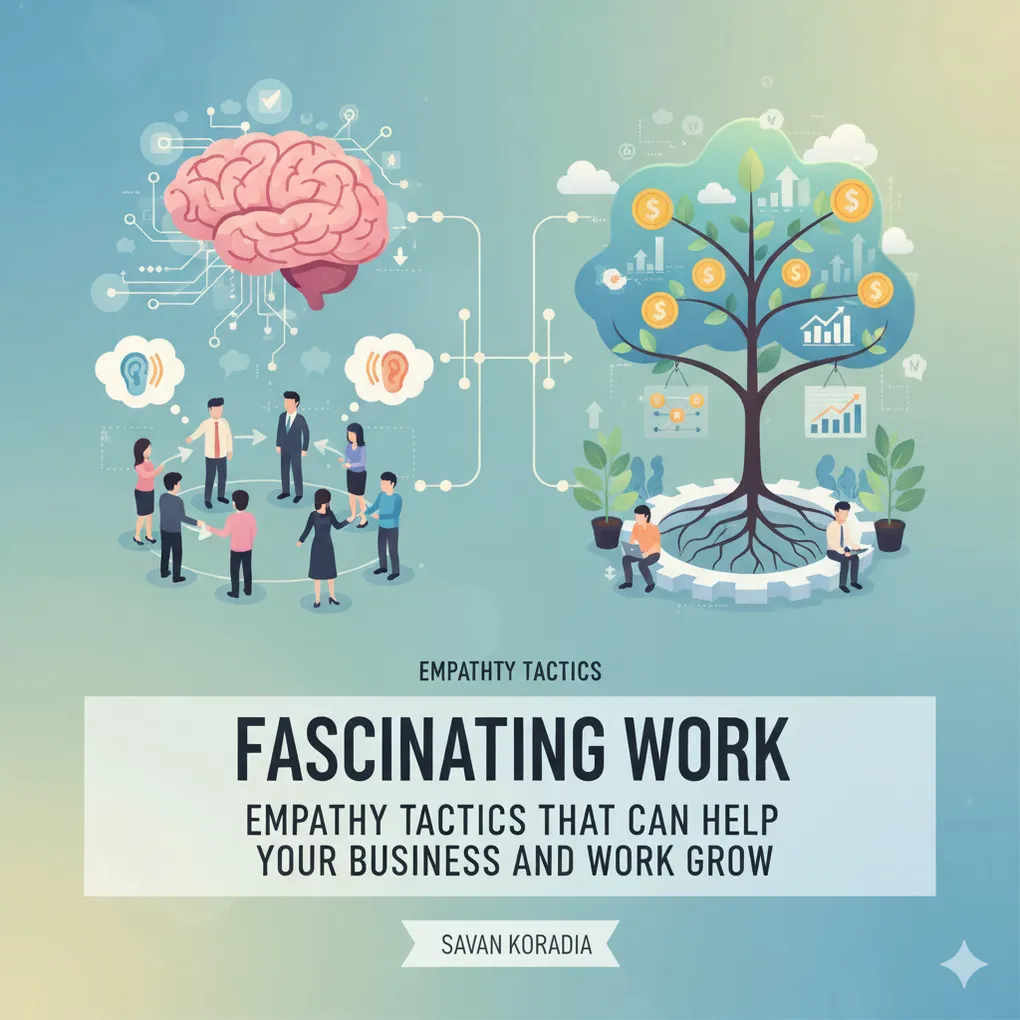
Fascinating Work Empathy Tactics That Can Help Your Business and Work Grow
Introduction
While working in a team with many different people, you might have witnessed the cross conflict in which even if you are right, you need to do what others say. Here others can be your boss/colleague/juniors.
Table of Contents
- What Is Tactical Empathy?
- Understanding Team Conflicts
- Scenario: When Conflict Arises
- How the Conflict Escalates
- Common (But Ineffective) Responses
- Using Empathy to Negotiate
- Why It Works – The Power of Empathy
- Conclusion: Building Win-Win Outcomes
What Is Tactical Empathy?
While reading the book “Never Split the Difference” by Chris Voss, I learned a very good method on Tactical Empathy.
Team discussion and collaboration are part of teamwork. When everyone agrees on the same goal and pursues the same makes a great team. But when there is teamwork there is a scope of conflicts, and that conflict might be tiny or very heated. And when you find yourself in such a situation, and if you don’t want to be the guy who accepts just everything even that is not right, there comes negotiation.
Understanding Team Conflicts
In conflict, there is always one side that emerges as aggressive. If one side wins that means another side is defeated, but negotiation makes it a win-win for all sides. In a win-win, there is nothing to lose but makes everyone happy.
Empathy means being aware other side’s perspective and using that awareness for us to negotiate the situation.
Scenario: When Conflict Arises
Let’s take a dummy scenario to understand this tactic.
Scenario: 2 parties working together to achieve the same goal → “Site launch of the customer”.
- Development team: creates the site
- Content team: prepares the content with the client
The content team provides data to upload. Although it’s not the development team’s scope to validate content, they upload it as part of facilitation. Later, the client reports abnormalities in the site and blames the recent changes. An internal team discussion begins about what went wrong and how to avoid it.
How the Conflict Escalates
Here’s where the real issue starts:
The manager of the development team — aggressive and dominating — asks the right question: “How do we avoid this next time?”
But no matter the answers, he’s already decided on his response.
Manager: OK team, what is the actual root cause of the issue the client reported?
Team: The issue is related to the content uploaded yesterday.
Manager: Why did we upload it without checking? Shouldn’t we pay more attention? What is the solution?
Team: well, as per terms of work, we will only facilitate content provided by the content team. It is the content team’s responsibility to make sure to have proper content and they need to be verified with the client before providing it to us.
Team: There are some options to deal with such a situation:
- Give some testing environment to the content team, where they can apply such changes and they can evaluate if there are any issues.
- Permit the content team for applying changes directly on the main server.
- We start validating content before applying it on the server. Manager: well, what do you think I discuss with all parties when the project starts? You are saying that what I’m dealing with is wrong? How can you even suggest this? I know what was the deal when the project was signed.
The team explains it’s the content team’s responsibility to verify content with the client. The manager dismisses their reasoning and challenges their suggestions, turning defensive.
At this point, his ego takes over — and the discussion derails.
Common (But Ineffective) Responses
There are usually two ways people respond:
- Leave: Avoid conflict and agree just to move on.
- Play fire with fire: Argue back and escalate the situation.
Both approaches lead nowhere productive.
Using Empathy to Negotiate
There’s a third option — using Empathy to guide the conversation.
Team: Hi manager, I know you are in a tough position and want to resolve this issue soon as possible. I understand your situation and I’m total with you on this. I tried to find some possible ways and only these 3 are the possible options that I can think of, which can resolve from next time. If you are ok, we should put this to the client and see what is their stand. What do you say?
Manager: Yeah, ok. Let’s ask this client and see what they say.
By doing this, you’re neither being submissive nor confrontational. You’re showing understanding of the manager’s pressure while steering the discussion toward a rational outcome.
Why It Works – The Power of Empathy
This is what empathy in action looks like.
You’re not agreeing blindly, nor are you fighting to win the argument.
You’re leveraging emotional understanding to make your point effectively — leading to a win-win for both sides.
Conclusion: Building Win-Win Outcomes
Empathy isn’t weakness — it’s a strategic tool. By applying tactical empathy, you can manage conflicts, improve team relationships, and create outcomes that benefit everyone — at work or in business.